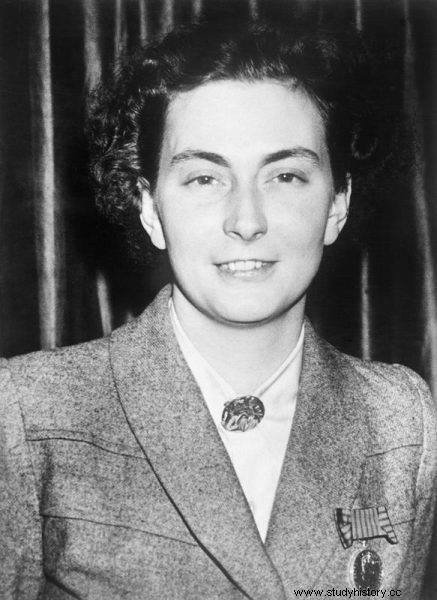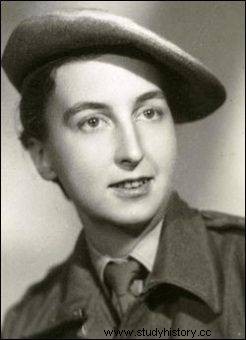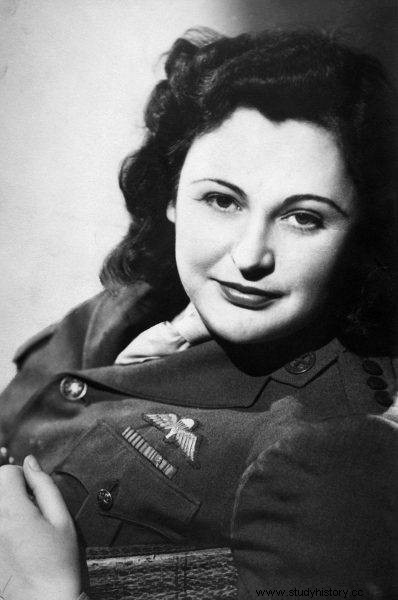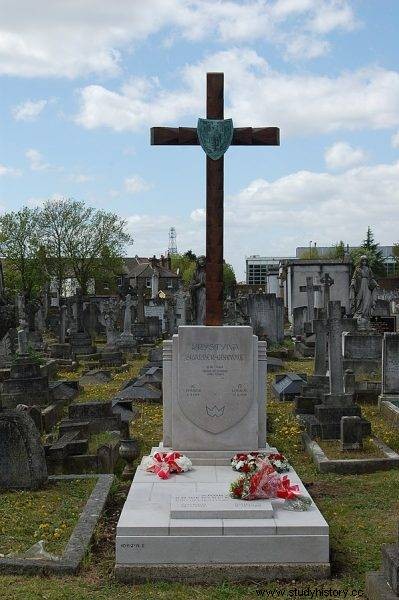They spied, saved prisoners of war and airmen, organized partisan units, commanded in combat. Here are five female characters from the French Resistance who ... weren't French at all.
1. Nice brunette Dédée
Andrée de Jongh was born in 1916 in Belgium. This nice and pretty brunette was called Dédée. After the country was occupied by the Germans in 1940, she started building a network among her friends to hide the Allied soldiers. POWs escaping from the camps and shot down airmen were taken over by members of the underground and hid in houses around Brussels. They were provided with civilian clothes and false documents, and then transported through France and Spain to British Gibraltar.
In August 1941, 25-year-old de Jongh arrived at the British consulate in Bilbao, Spain, with an English soldier. There, she demanded help in organizing escapes. So Section 9 of the British Military Intelligence took her under its wing, dealing with, inter alia, saving soldiers behind enemy lines.
A net created by a young Belgian girl - called the Comet Net ( Réseau Comète ) - turned out to be extremely efficient and valuable. Until the liberation of Belgium in 1944, she successfully transferred 400 Allied soldiers to Spain. Of these, de Jongh escorted personally on the way through France and the Pyrenees. In early 1944, during her 35th expedition, Dédée fell into the hands of the Germans.

Andrée de Jongh. The photo is from 1946
She went through 20 interrogations to the Gestapo. She was sent to the concentration camp in Ravensbrück, where she lived to see the liberation. After the war, she left for Africa, where she worked as a nurse in a leper colony for 28 years. She died on October 13, 2007 at the age of 91.
It was her story that inspired Kristin Hannah to write the novel "Nightingale".
2. A Parisian Englishwoman
Pearl Witherington was born to an English family living in Paris. She grew up in this city and then started working at the British embassy. Needless to say, she spoke French very well and could easily pass for a native French. After the Germans defeated France in 1940, Pearl made her way to the British Isles.
She found a job there at the Ministry of Aviation, but did not want to rewrite documents. She wanted to fight for her first homeland - France. In June 1943, she volunteered for the Special Operations Command (SOE). After seven weeks of training, she was dropped by parachute over France. There she was assigned to a network code-named "Stationer". Pearl was a courier for over eight months.
When the chief of the network was arrested by the Germans, Pearl had to take over the management. She recreated it, reorganized and acquired 1.5 thousand. armed men who as maquis undertook guerrilla operations . Before the scheduled landing on June 6, 1944, SOE headquarters activated its agents in France.
Units led by them were to destroy railroads and telephone lines, blow up bridges, and attack selected points. The group Pearl Witherington also entered the fight. Its effectiveness was so great that the Germans appointed a prize of 1 million francs for the head of the boss. They also tried to liquidate the unit during anti-partisan actions.

The effectiveness of Pearl Witherington was so great that the Germans put a prize of 1 million francs on her head
Subjects of Pearl maqius they attacked transport columns, fired on smaller units and patrols, and broke the railroad connecting southern France with Normandy more than 800 times.
In September 1944, Pearl returned to Britain. It would seem that with such a wartime past she would become a feted heroine. It turned out, however, that only men can perform heroic deeds in war.
Admittedly, she was introduced to the British High Military Cross (Military Cross) award, but was judged as a woman "ineligible" for it. So she was offered another high honor - the Order of the British Empire - but it was civilian. Witherington refused to accept it. She died in February 2008 in France at the age of 93.
3. Rebellious teenager
Nancy Wake was born in Wellington, New Zealand in 1912. At 16, she ran away from home and started working as a nurse. Then, for the money she had borrowed from her aunt, she went to New York, and then to London, where she tried her hand at journalism. She succeeded - she became a correspondent for Hearst newspapers in Europe.
"White Mouse"
In 1939, she married the French industrialist Henri Edmond Fiocca and settled in Marseille. After the defeat of France in 1940, Wake joined the Resistance and began serving as a courier. Then she established cooperation with the network of British officer Ian Garrow, which organized the escapes of Allied soldiers.
In the underground activity, Wake has proven to be very clever and effective. Due to her ability to avoid dangers and arrest, the Germans called her the "White Mouse" ("Weisse Maus"). In 1943 she was the most wanted person in France by the Gestapo - a prize of 5 million francs was put on her head.
In the same year, there was betrayal in the network and the Germans began arrests. Wake decided to flee to England. There she underwent training at SOE, and on the night of April 29-30, 1944, she was parachuted over Auvergne in central France. She became a liaison with the partisan unit of Captain Henri Tardivata. Thanks to her involvement, the size of the branch increased to 7.5 thousand. people.

Nancy Wake had no mercy for spies and was able to force her softer colleagues to execute a girl spying for the Germans, photos around 1945
She also led the attack on the local Gestapo headquarters in Montluçon. When she discovered that her people were protecting the girl spying for the Germans and that they had no conscience to shoot her, she forced them to be executed ...
Another time she aroused the admiration of the partisans, when she killed a German guard with her bare hands during the action. After the war, Wake worked in British intelligence and ran for the Australian Parliament twice. She died in August 2011 at the age of 98.
4. The Avenger
Violette Szabo, half British, half French, was born in 1921 in Paris as Violette Bushell. She grew up in France and Great Britain and was therefore fluent in two languages. In 1940 in London she met the elder Étienne Szabo, an officer of the Foreign Legion of Hungarian origin, and soon she married him. Étienne went to Africa, where he was killed in the ranks of the Free French at El Alamein. His death made Violette join SOE to fight the Germans.
During the second mission in France in June 1944, she was dropped near Limoges, where she was to support the activities of French partisans. On June 10, Violette set off by car to meet the local underground commander. On the way, she unexpectedly found herself at a German control post and after an exchange of fire (she was armed with a Sten submachine gun) she was captured.
She was taken to Paris, where she was interrogated and tortured. On August 8, 1944, she was sent to the Ravensbrück concentration camp. She was shot there on February 5, 1945. She was 23 years old.
5. Polish woman is the best spy
Among the SOE agents operating in France, there was also a Polish woman - the famous female spy, Krystyna Skarbek. This landlord's daughter had a happy and prosperous childhood and youth. She rode horses, walked in the mountains, took part in the Miss Polonia competition. When the war broke out, she went to France and then to England. She reported to British intelligence there and, after training, was sent to Hungary, where she conducted espionage activities. She also organized escapes of Poles interned in local camps.
On July 6, 1944, Krystyna was parachuted in south-eastern France. She joined a network led by SOE agent Francis Cammaerts. She helped establish contacts between the French maquis and the Italian partisans. When in mid-August the Germans accidentally arrested three important members of the resistance movement (including Cammaerts), Skarbek contacted the Gestapo officer Max Waem.

The restored grave of Krystyna Skarbek at the Catholic cemetery of Kensal Green St. Mary in London
She introduced herself to him as the niece of General Bernard Montgomery and threatened the consequences if the prisoners were harmed. She also offered two million francs for their release. She threatened and persuaded alternately. Finally, the Gestapo man was persuaded and released the prisoners. And, of course, he didn't see any money.
She left the service for Skarbek in April 1945 in Cairo, receiving only 100 pounds of severance pay. She worked as a maid, telephone operator, saleswoman, and flight attendant on ships. She died in 1952, murdered with a knife by a steward in love with her, whose proposal she had previously rejected ...
